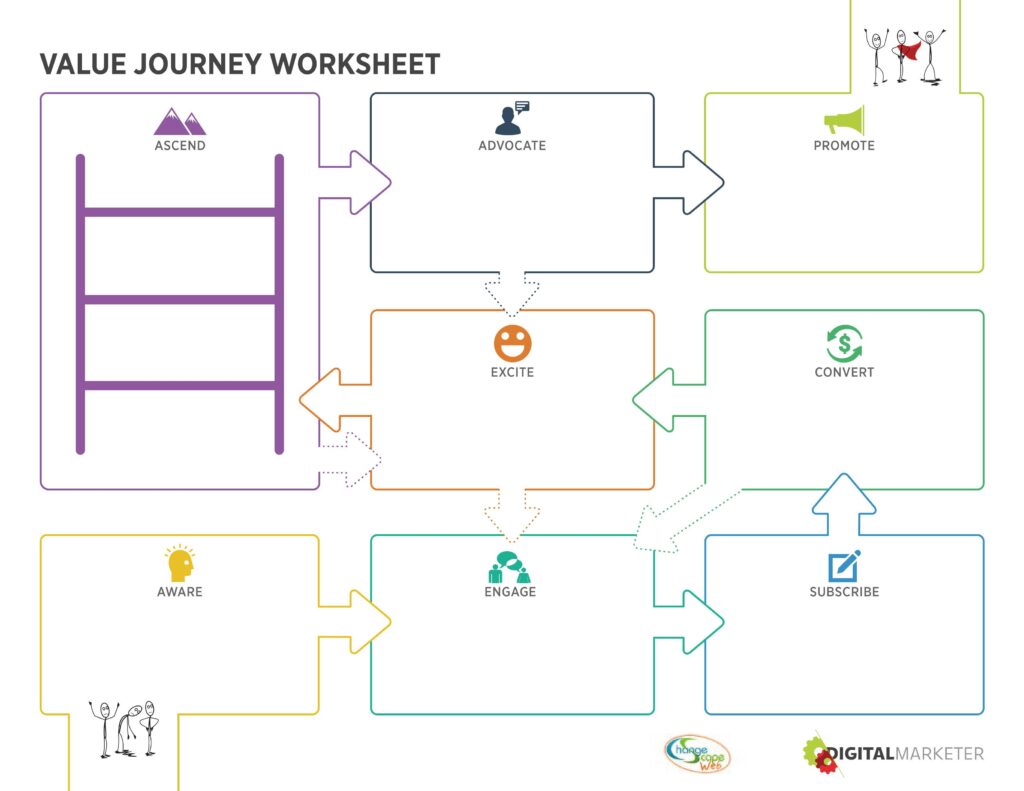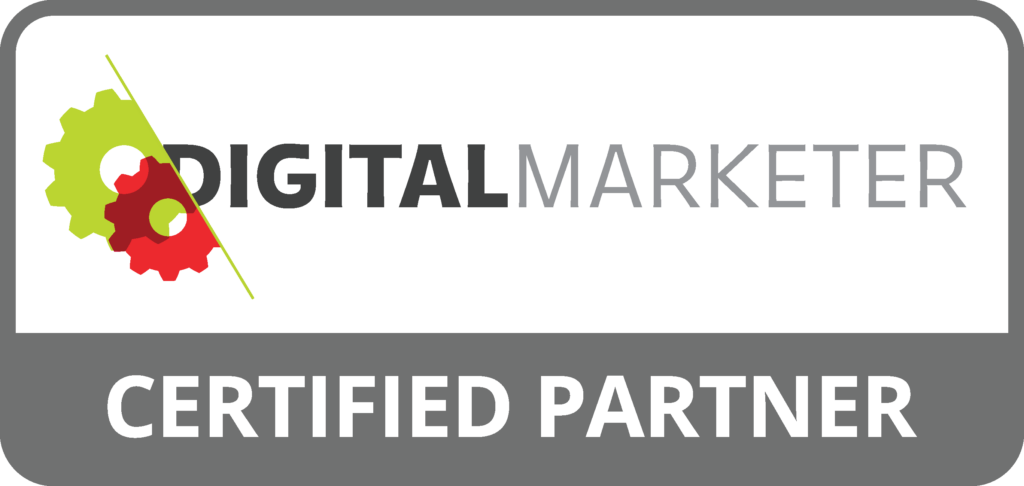The role of marketing is to move prospects and customers seamlessly and subtly through each phase of the “Value Journey”.
Digital Marketer has mapped out the 8 stages of the Customer Value Journey. These are the stages that you did your self assessment on when you completed the Value Journey Audit.
Haven’t Completed the Value Journey Audit Yet? See How Effective Your Marketing Is
The 8 Stages of the Customer Value Journey
- Aware
- Engage
- Subscribe
- Convert
- Excite
- Ascend
- Advocate
- Promote
 Human psychology says that it is very unusual to skip more than 2 stages in the journey. This about it… it can feel a little awkward if someone asks you to marry them when they first meet you.
Human psychology says that it is very unusual to skip more than 2 stages in the journey. This about it… it can feel a little awkward if someone asks you to marry them when they first meet you.
The reality is, customers are in control of the buying process now more than ever. Our job as marketers is to influence their journey, not only to become a customer but also a champion for our business. This doesn’t just happen by chance.
Stage 1: Aware
Before someone can buy from you they have to know your business or your product or solution exists. Awareness can be created using advertising, search engine optimization, and social media to name a few. It is rare for most businesses to have a customer is is ready to buy from you the very first time they learn about you.
Stage 2: Engage
Okay, so now your potential customer knows about you, but that’s just the beginning. They have to get to like and trust you before they are ready to buy from you. Engagement is where you start to build a relationship with the customer, typically with content marketing to either educate or entertain them. This stage doesn’t ever really stop – at least it shouldn’t if you want to maximize your opportunities.
Engagement activities include tactics such as social media, email marketing, videos, blogs, podcasts, and so forth — typically what we refer to as Content Marketing.
In fact the Value Journey Audit and this page are both examples of engagement!
Stage 3: Subscribe
So now the customer know who you are, and they’ve started to like you because of the content that you have been providing to them to educate or entertain them. But just because someone reads one of your blog posts does NOT mean that you can trust them to return on their own accord in the future. You need them to subscribe – that is where the person gives you their contact information and permission to contact them again. It could be an email address, a phone number, or social media messenger permission.
You provide free content , products or services (checklist, ebook, webinar or seminar, demo, trial offers, discovery calls, free estimate, etc) that requires that the prospect give you their contact information – you are providing value in advance (before the purchase).
Stage 4: Convert
First of all, conversion does not always equal a sale. The prospect may give you their time (free estimate or consultation) and not money. Conversion may just be showing up to the event or trial. But they can also go ahead and buy from you as well.
The key to success in this stage is to employ “entry-point offers” designed to give the new prospect tremendous value without forcing them to put too much “skin in the game.” The Convert stage is about acquiring buyers or ramping up the commitment level of the leads you already have.
Stage 5: Excite
The prospect has now had a transaction with you. They might even be a customer now if they made a purchase.
The key here is that that first transaction has to be a good one. If the person doesn’t get value from this transaction, they won’t move on to the next stage and purchase more expensive things from you.
Each time a customer or prospect does what you ask them to do (attend this webinar, buy this product, hire me for this service) you should engineer marketing that maximizes the chances that they will get value.
Email marketing works really well at this stage, along with remarketing and using videos.
Stage 6: Ascend
You’ve spent time and money to get a new customer, and to make sure that they are getting value from you. This stage is about getting the customer to buy more from you and more often. A great way to do this is to present them with other relevant offers.
The cost of acquiring a brand new customer is the most expensive. Getting your existing customers to buy from you again, or to buy more from you is a great way to maximize your profit.
Email marketing, digital advertising, and content marketing are critical in this stage.
Stage 7: Advocate
At this stage, you want to turn a happy customer into someone that advocates for and speaks positively about your business. Advocates build awareness, trust and credibility to a wider audience.
Social media contests with customers can be very powerful here, as are review request campaigns.
Stage 8: Promote
The promote stage is where a customer actively seeks to spread the word about your business. They may do this just because of the great experience they had and/or because you have provided them with an incentive to do so. Referral marketing and affiliate marketing are very powerful because they come from a trusted source.
Take Control of the Customer Buyer’s Journey
So don’t just let marketing happen by chance. Make your marketing systematic and recognize the role each of these stages means to your business and the bottom line. You can guide the customer journey to gain new customers and maximize the profit you receive from each customer. Changescape Web is a Digital Marketing Certified Partner and can take your business to the next level.

Schedule a time with us to discuss how the Customer Value Journey can help your business
